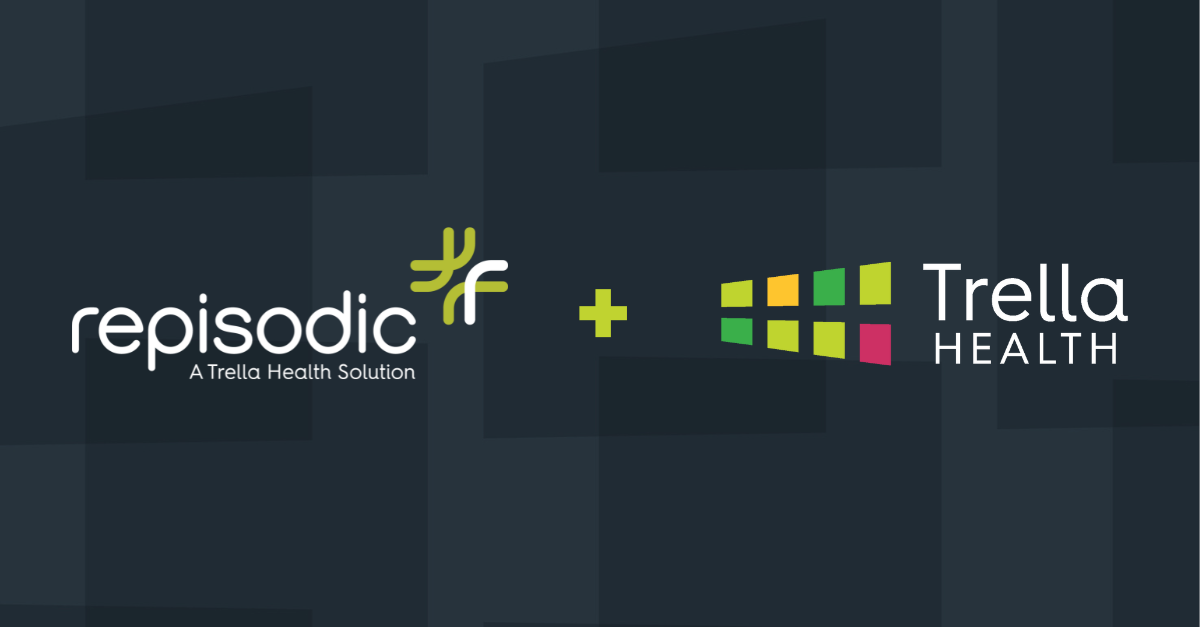Operations teams across the healthcare industry are facing rising pressure to streamline workflows, improve patient outcomes, and deliver on strategic priorities. But even the most skilled operations leaders can be held back by systemic challenges that limit visibility, coordination, and performance.
From unorganized workflows and manual processes to referral leakage and payer misalignment, these challenges often stem from one root cause: a lack of access to the right data at the right time.
Here are the top five challenges that may be holding your healthcare organization back — and proven, scalable ways to overcome them with better insights and smarter strategy.
 1. Healthcare Workflow Automation: When Teams and Data Aren’t Aligned
1. Healthcare Workflow Automation: When Teams and Data Aren’t Aligned
Siloed data and disconnected healthcare workflows create serious barriers to collaboration. When clinical and operations teams can’t access the same insights, it becomes difficult to execute efficiently or align around organizational goals. Manual reporting, delayed responses, and disjointed outreach are common symptoms of this misalignment.
When operations leaders lack the tools to showcase executive vision and coordinate efforts across departments, performance suffers at both the clinical and business levels.
How to Overcome It:
- Identify KPIs and create automated dashboards that reflect shared business and clinical goals, such as reducing referral-to-appointment time, improving patient intake speed, and increasing the percentage of tasks completed on time — giving teams real-time visibility into operational performance across departments.
- Integrate referral, payer, and performance data into a centralized system, so operations leaders can assign accountability and track critical metrics like response time to referrals, task aging, and conversion rates from referral to scheduled appointment — ensuring alignment and timely execution.
- Connect your EHR and referral management systems to trigger automated workflows, like task generation for scheduling or insurance verification, based on changes in referral status — minimizing manual handoffs and accelerating referral closure rates within defined service level agreements.
2. Network Leakage: Losing Patients and Control
Without insight into referral activity, healthcare organizations often lose patients to competing providers — and don’t realize it until volumes start to decline. This not only impacts financial performance but also limits the ability to influence patient outcomes, manage utilization, and maintain continuity of patient care.
Referral leakage undermines network integrity and makes it harder to execute on care coordination and value-based care initiatives.
How to Overcome It:
- Build referral leakage dashboards that monitor patient outflow by diagnosis, provider, and geography so you can quickly identify patterns. For example, rising out-of-network rates for orthopedics or a spike in lost referrals can prompt targeted intervention.
- Use historical referral data to flag high-risk provider relationships, focusing on metrics like declining in-network referral rates or sharp year-over-year drops in volume. Re-engage those providers with clear visibility into their referral performance and network contribution.
- Strengthen high-value referral relationships through proactive engagement strategies, using data on average referral value, patient retention rates, and re-referral trends. This ensures your strongest partners stay aligned with your network strategy.
3. Payer Mix Strategy: Misalignment Leads to Missed Margins
As the healthcare industry navigates a shifting reimbursement landscape, many struggle to align their partnerships and care strategies with the most favorable payer mix. Without visibility into the payer dynamics of referral sources, decision-making becomes reactive rather than strategic.
Relying too heavily on low-reimbursement payers or failing to capitalize on Medicare Advantage growth can jeopardize both margins and sustainability.
How to Overcome It:
- Overlay payer mix insights onto your referral workflows to help intake and outreach teams prioritize high-margin relationships. Focus on providers who consistently refer patients covered by profitable contracts, and flag those associated with a high percentage of low-reimbursement payers.
- Compare reimbursement rates across payer contracts using actual claims data to identify underperforming agreements. Key indicators include high denial rates, long payment cycles, low net revenue per Diagnosis-Related Groups (DRGs), and payer-specific collection issues.
- Develop referral partner profiles that include both clinical alignment and payer compatibility so you can avoid high-volume relationships that consistently result in net financial loss due to out-of-network rates or poor insurance coverage.
4. Value-Based Care Unpreparedness: Falling Behind in a Fast-Paced Market
Despite the accelerating shift toward value-based care (VBC), many organizations remain underprepared to thrive in these models. Challenges such as a lack of episode-level insights, poor cost transparency, and disconnected care coordination all contribute to underperformance.
Without the ability to track key operational metrics like readmissions, length of stay, or total episode costs, organizations cannot identify high-impact opportunities to reduce variation or improve outcomes.
How to Overcome It:
- Leverage integrated EHR and claims data to track total episode cost, utilization, and quality metrics. This provides visibility into performance under value-based care models through indicators like avoidable emergency visits, 30-day readmissions, and post-acute care spending.
- Build internal dashboards by DRG or clinical category to identify areas with high variability or cost overruns. For example, monitor excessive imaging use in joint replacements or inconsistent discharge planning in heart failure cases.
- Collaborate with post-acute partners using patient-level data on follow-up adherence, home health engagement, and recovery timelines to create shared accountability for outcomes and drive continuous care improvement.
- Define discharge workflows based on value-based care criteria, such as functional status milestones, confirmed medication adherence, and completion of follow-up visits within seven days. These measures support better outcomes and reduce unnecessary utilization.
5. Patient Intake Coordination: Where Fragmented Referral Workflows Disrupt Continuity of Care
In many hospital settings, intake coordination is the first critical test of how well healthcare operations support seamless patient care. Yet too often, healthcare organizations rely on outdated workflows that result in missed connections, incomplete clinical data, and referral delays — all of which negatively impact patient outcomes and patient satisfaction.
A fragmented intake process undermines not only care coordination but also operational efficiency, leading to downstream issues in patient flow, provider capacity, and financial performance. For healthcare providers, especially those navigating high volumes and complex healthcare workflows, the intake bottleneck can compromise patient safety and make it harder to deliver timely, high-quality services.
How to Overcome It:
- Equip intake teams with intelligent triage tools that incorporate diagnosis, comorbidities, functional status, and social determinants. This ensures patients are directed to the most clinically appropriate level of care from the outset.
- Automate referral intake and provider matching by embedding decision support into the referral workflow. Automatically surface high-fit provider options based on clinical criteria, insurance coverage, and patient preferences to accelerate response times and improve acceptance rates.
- Monitor and optimize referral network performance using real-time metrics like referral acceptance rate, intake-to-appointment time, and patient satisfaction. Leverage this data to hold partners accountable and identify gaps in network capacity or communication.
 How Trella Health Helps Increase Operational Efficiency
How Trella Health Helps Increase Operational Efficiency
Operational leaders don’t just need more data — they need the right data delivered at the right time and in the right format. Trella Health enables this by offering a suite of analytics tools designed to improve visibility, streamline workflow automation, and support strategic decision-making across the care continuum.
Here’s how Trella Health is helping healthcare providers address the biggest operational pain points:
- Medicare Advantage Dataset: With coverage across 68% of MA claims and visibility into 78% of MA patients, Trella Health provides detailed insights to identify high-value referral sources, track referral leakage, and optimize payer alignment.
- Care Transition Solutions: Through its merger with Repisodic, Trella Health supports discharge planners and patients with a digital platform that enables smarter, data-driven decisions — improving care transitions and supporting value-based care goals.
- TEAM Metrics & Episode Insights: Trella Health offers strategic insight into CMS’s TEAM-enrolled hospitals, including episode-level volumes, DRGs, and historical performance metrics — helping organizations prioritize partnerships and improve patient outcomes.
- CRM for Workflow Optimization: Trella Health’s healthcare CRM centralizes relationship management and outreach tracking, allowing operational teams to align their efforts, reduce inefficiencies, and drive measurable impact across clinical and business functions.
Final Thoughts
Operational challenges are inevitable in today’s complex healthcare environment, but they don’t have to define your organization’s performance. With the right insights, leaders can shift from reactive problem-solving to proactive strategy execution.
Whether the goal is reducing network leakage, improving payer alignment, or preparing for value-based care, access to timely, actionable data is key.
Want to see how Trella Health helps healthcare organizations unlock smarter operations?
Explore the platform to learn how leaders are eliminating bottlenecks and building more efficient, data-driven systems for the future.
















